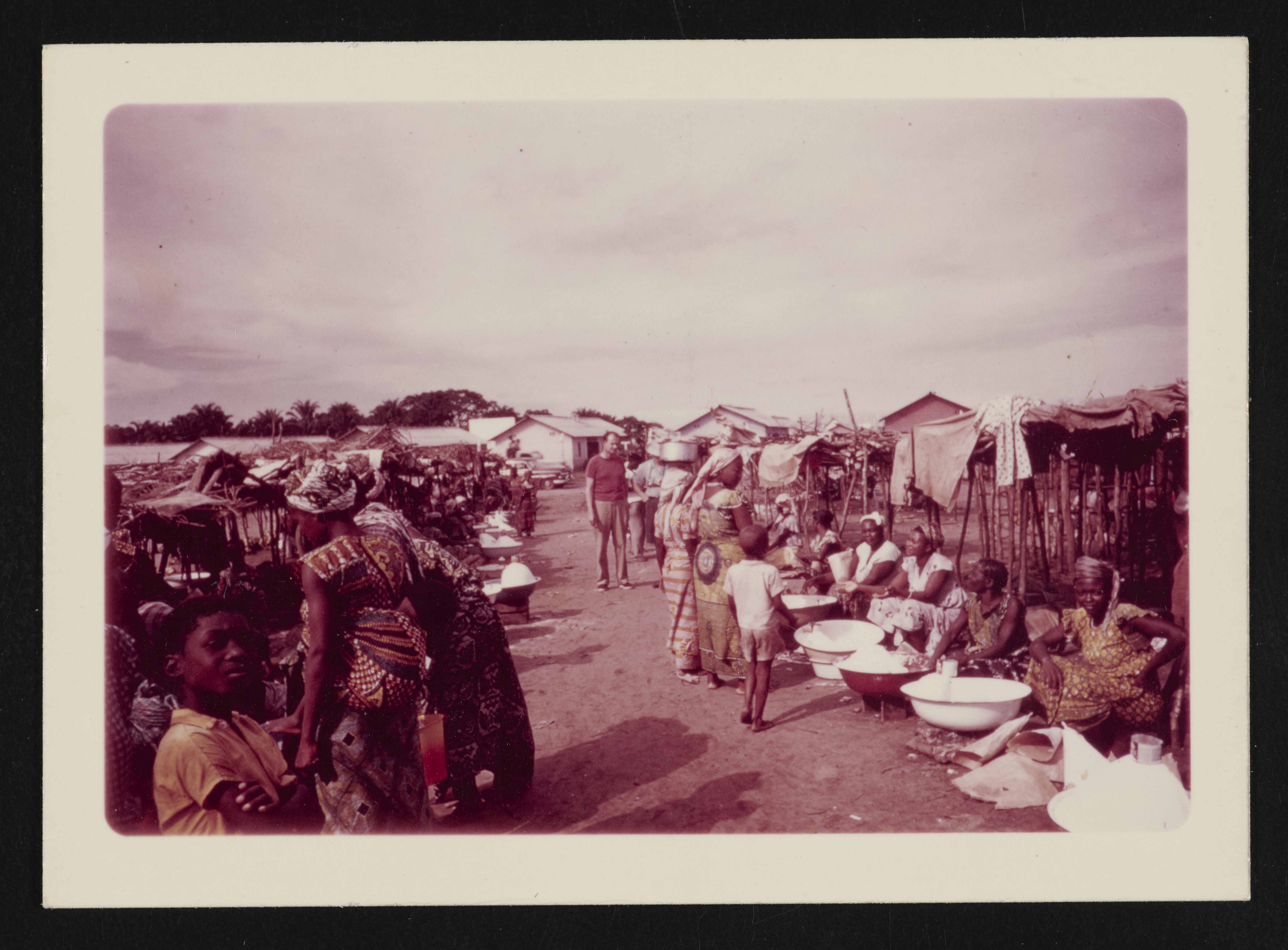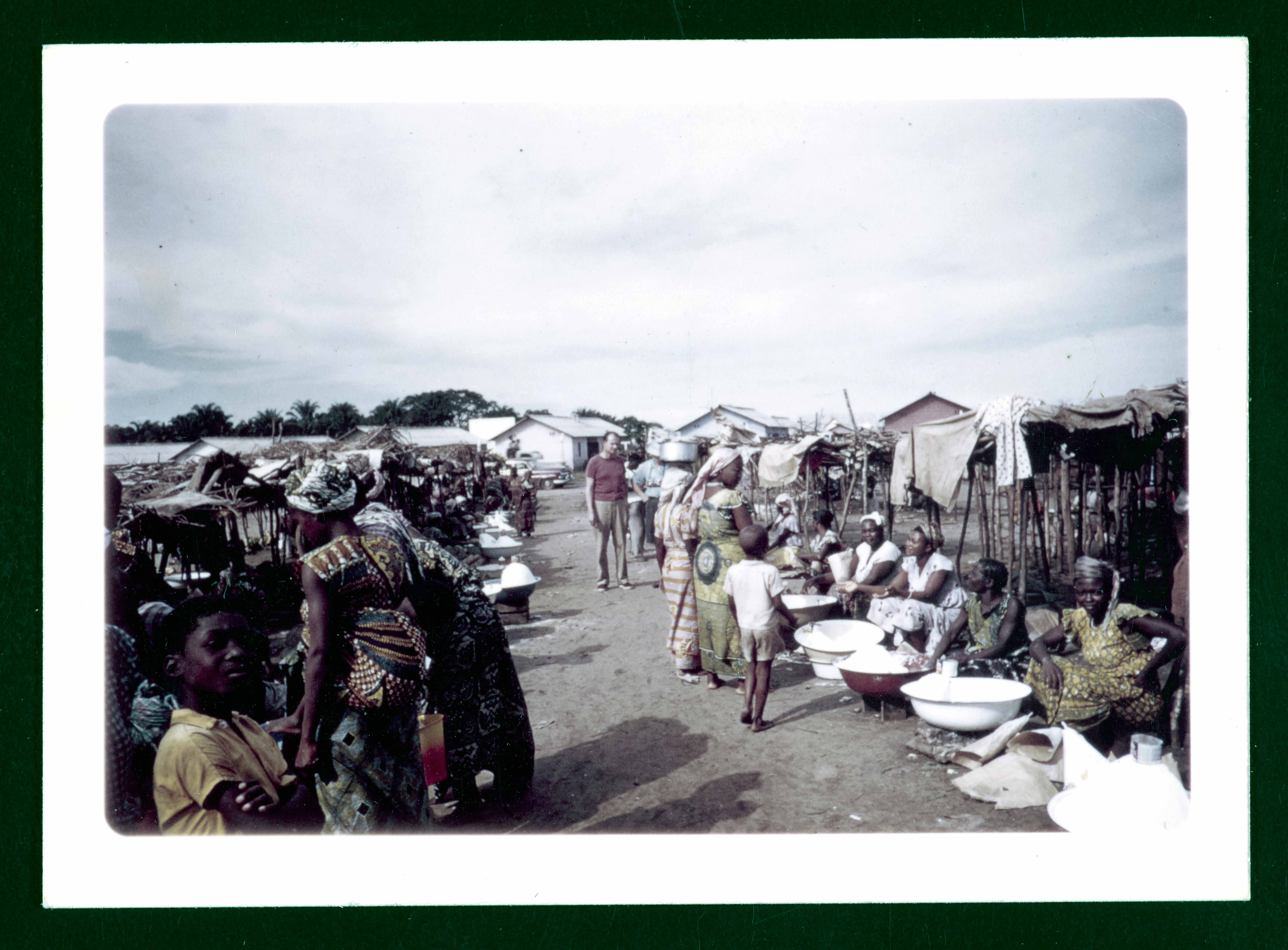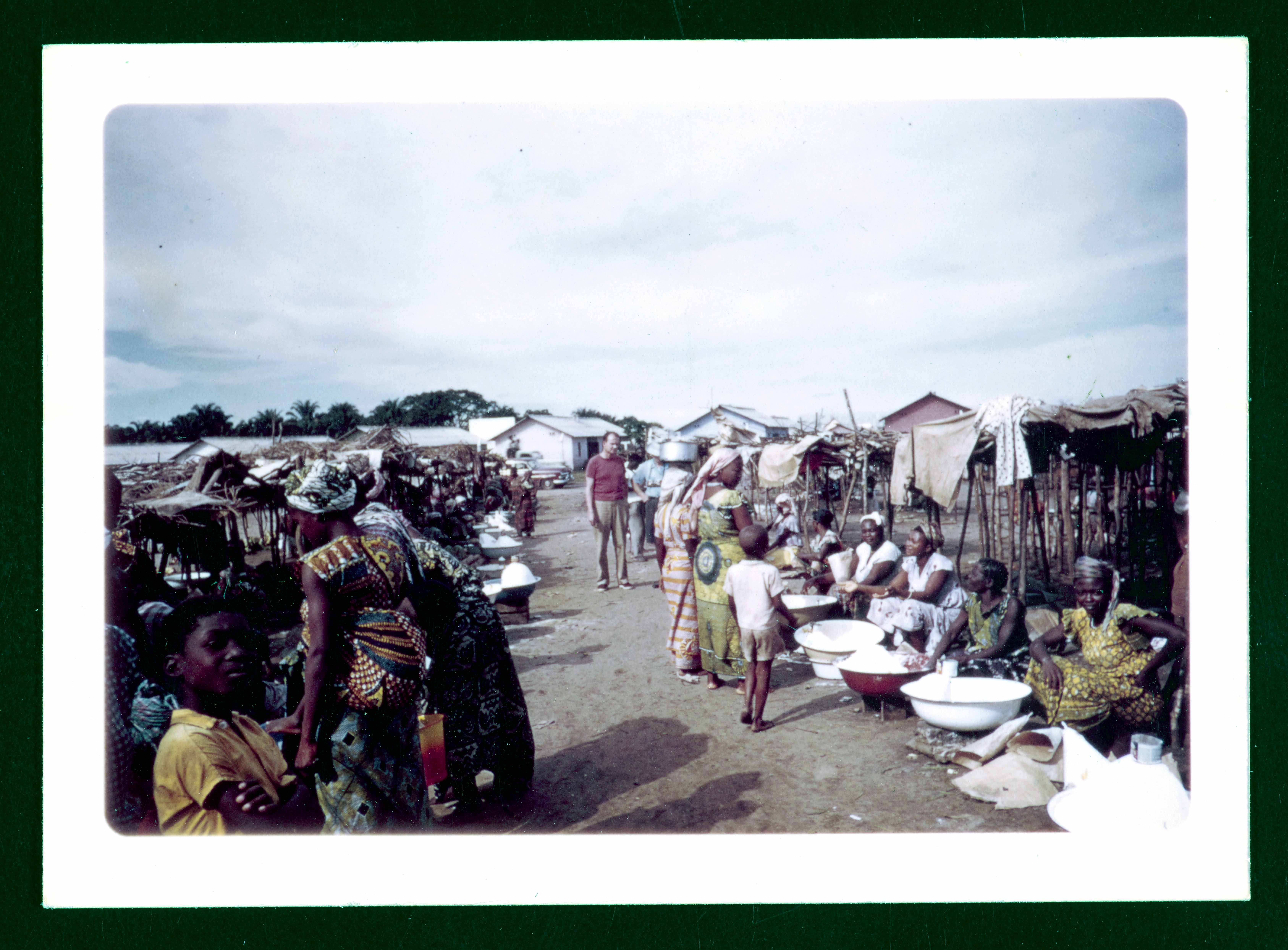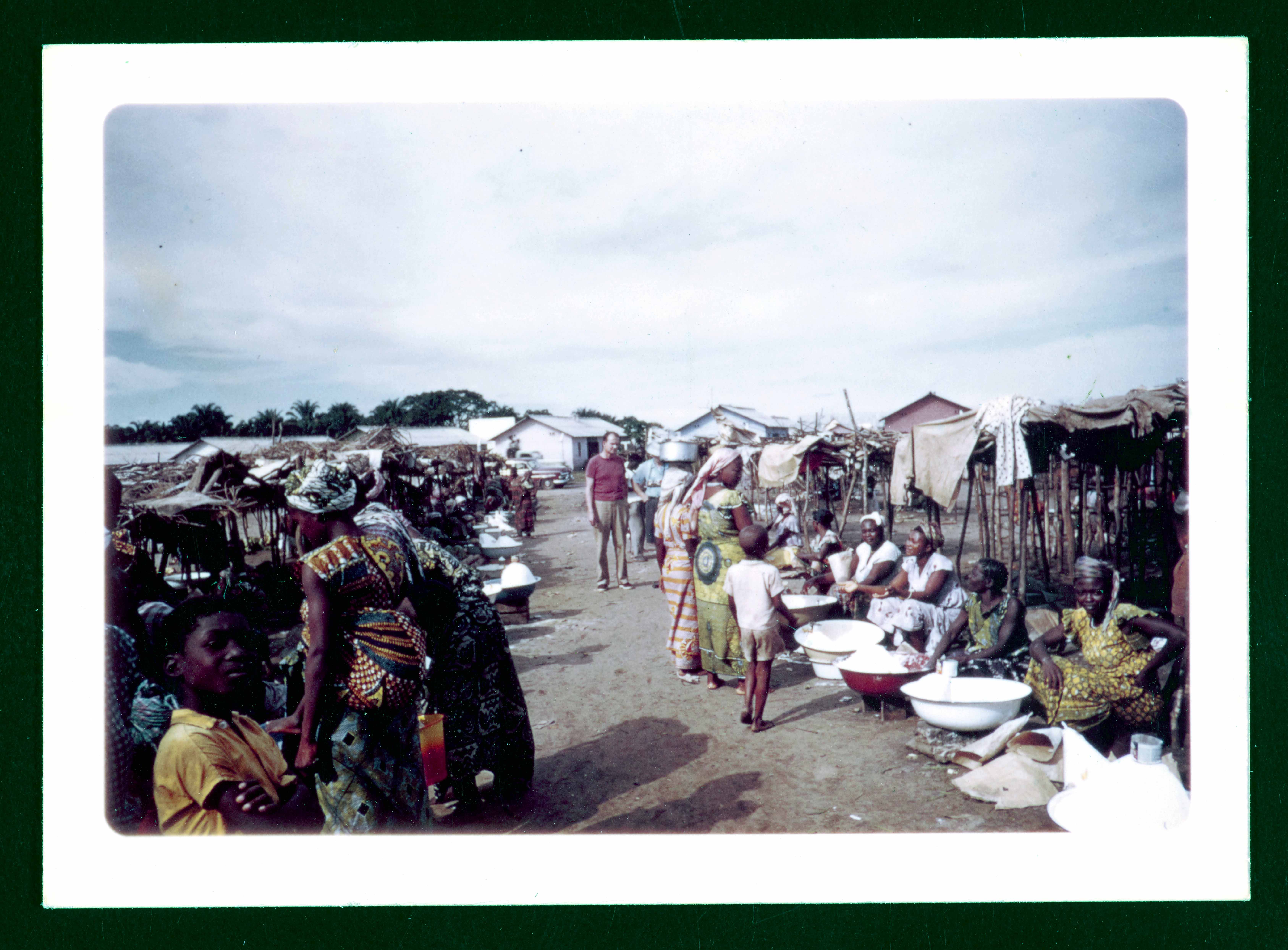This week from the Field Book Project team: digital conservation.
The header image of this blog (also included below) is one version of a 1955 photograph of a local market in Leopoldville in what was the ‘Belgian Congo’, a colony in Central Africa, and now the Democratic Republic of the Congo. To the naked eye, the hue of this photo is unmistakably red due to color shift, probably from the fade of the non-red dyes in the original print.
The Field Book Project team decided early on to perform all digitization within the same lighting environment to the best of our abilities. We digitize the objects as they exist in natural light, creating a predictable and reliable foundation that equalizes our content. This way, researchers know exactly what the object looks like at this moment in time. Our digital images are essentially a WYSIWYG to the collection—a visitor would have access to the same photo print online as they would in our reading room.
While it is impossible to objectively reconstruct the original photograph due to the unpredictability of color shift, it is possible to subjectively ‘rewind the clock’ and estimate the colors of the original print. For this kind of digital conservation, the biggest question is how to set the goal. Should we try to (a) reconstruct the print as it originally existed, (b) reconstruct the scene that the print depicted, or (c) generate a visually pleasing image that might be a bit of both? Let's try a rough estimate for all three.
1. Estimate of the print: correcting the color balance
- Using photography software, we can try to reset the color balance. Doing so gives us the first corrected image, an estimation of what the original print may have looked like in 1955. Notice that the bowls in the viewer’s lower right are a little blown out—the image is slightly overexposed relative to the bowls.
2. Estimate of the scene: improve saturation
- While the first corrected image may match the print, it does not seem to fully match the scene. The colors are not sufficiently saturated. Saturation is the “colorfulness of an area judged in proportion to its brightness,” meaning colors that do not pop out with visual interest. The saturation is improved in the second corrected image, which makes the market feel more alive.
3. Enhanced image: less white, more detail from shadows, more skin tones
- The last adjustments are very subtle. I boosted the reds (irony?) to make skin tones even livelier, increased the overall exposure of the photo to pull out more detail from the dark section on the viewer’s left, and trimmed off the top five points of the 0-255 curve, which prevents the white bowls from being too bright relative to the rest of the market.
It is hard to stop adjusting colors once you start. For now, I will leave these edits as is to focus on digitizing more photographs for the Field Book Project. Have you brought old photos to life? Tell us about your edits in the comments!
Produced by the Smithsonian Institution Archives. For copyright questions, please see the Terms of Use.





Leave a Comment